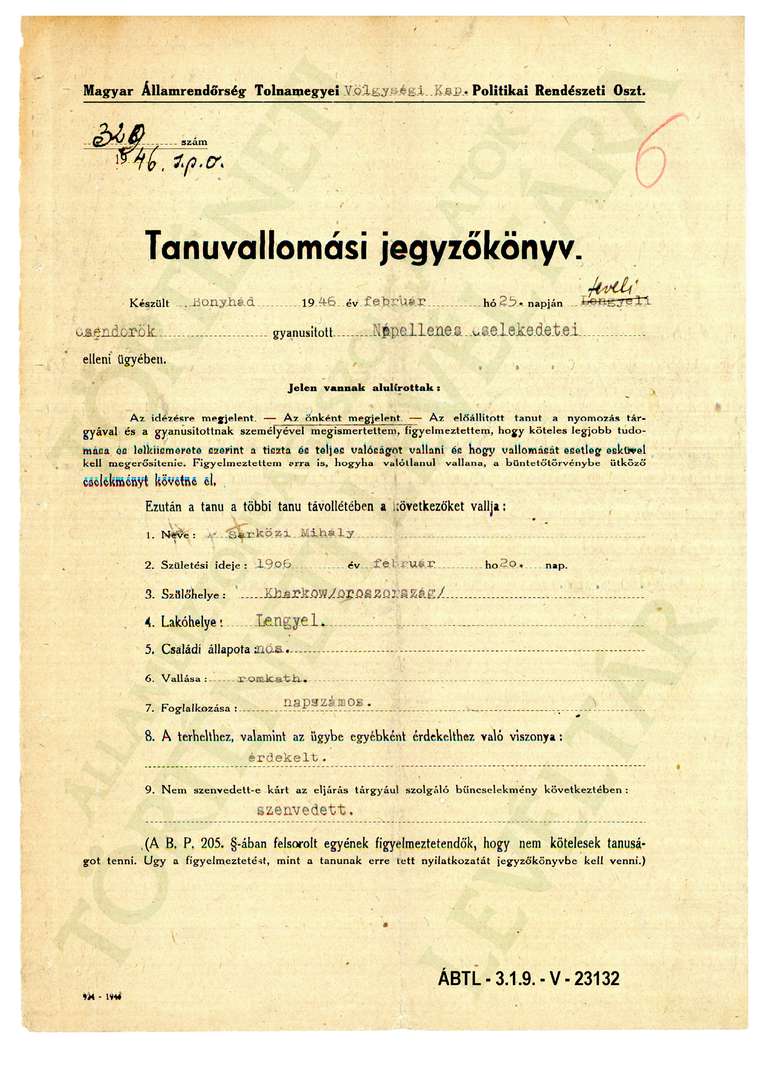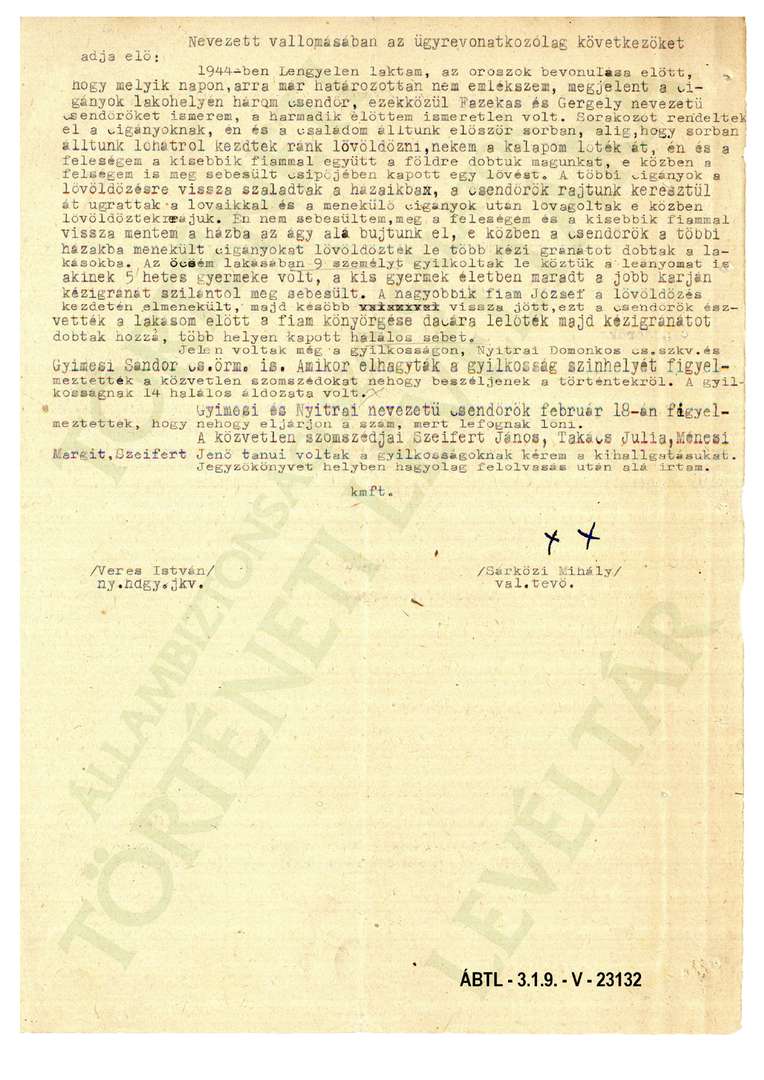Sárközi Mihály napszámos, túlélő tanú 329/1946. számon 1946. február 25-én
a következő tanúvallomást tette a Magyar Államrendőrség Tolna megyei Völgységi
Kapitánysága Politikai Rendészeti Osztályán 32
1944-ben Lengyelben laktam, az oroszok bevonulása előtt, hogy melyik napon, arra
már határozottan nem emlékszem, megjelent a cigányok lakóhelyén három csendőr.
Ezek közül Fazekas és Gergely nevezetű csendőröket ismerem, a harmadik előttem ismeretlen
volt. Sorakozót rendeltek el a cigányoknak. Én és a családom álltunk először
sorba. Alig, hogy sort álltunk, lóhátról kezdtek ránk lövöldözni. Nekem a kalapom lőtték
át, én a feleségem és a kisebbik fiammal együtt a földre dobtuk magunkat. Eközben
a feleségem is megsebesült, csípőjébe kapott egy lövést. A többi cigányok a lövöldözésre
visszaszaladtak a házaikba. A csendőrök rajtunk keresztül átugrattak a lovaikkal és
a menekülő cigányok után lovagoltak. E közben lövöldöztek rájuk. Én nem sebesültem
meg, a feleségemmel és a kisebbik fiammal visszamentünk a házba. Az ágy alá
bújtunk el. Eközben a csendőrök a többi házakba menekült cigányokat lövöldözték le.
Több kézigránátot dobtak a lakásokba. Az öcsém lakásában 9 személyt gyilkoltak le,
köztük a lányomat, akinek 5 hetes gyermeke volt. A kisgyermek életben maradt, a jobb
karja kézigránátszilánktól megsebesült. A nagyobbik fiam, József, a lövöldözés kezdetén
elmenekült, majd később visszajött. Ezt a csendőrök észrevették. A lakásom előtt a
fiam könyörgése dacára lelőtték, majd kézigránátot dobtak hozzá. Több helyen kapott
halálos sebet.
Jelen voltak még a gyilkosságon Nyitrai Domonkos csendőr szakaszvezető, Gyimesi
Sándor cs. őrm. is. Amikor elhagyták a gyilkosság színhelyét, figyelmeztették a közvetlen
szomszédokat, nehogy beszéljenek a történtekről. A gyilkosságnak 14 halálos áldozata
volt.
Gyimesi és Nyitrai nevezetű csendőrök (1945) február 18-án figyelmeztettek, hogy nehogy
eljárjon a szám, mert le fognak lőni. A közvetlen szomszédjaim… tanúi voltak a
gyilkosságoknak, kérem a kihallgatásukat.









